Complete Solutions to Level-5 of chapter BENZENE of Class 11 book with complete answers and questions
| Class 11 | CHEMISTRY |
| Chapter | BENZENE |
| NARAYANA | Level-5 |
| Number Of Questions | 52 |
| Academic Year | 2023-24 |
Toluene on oxidation with dilute `HNO_(3)` gives
View SolutionThe reaction of toluene with `CI_(2)` in presence of `FeCI_(3)` gives predominantly
View Solution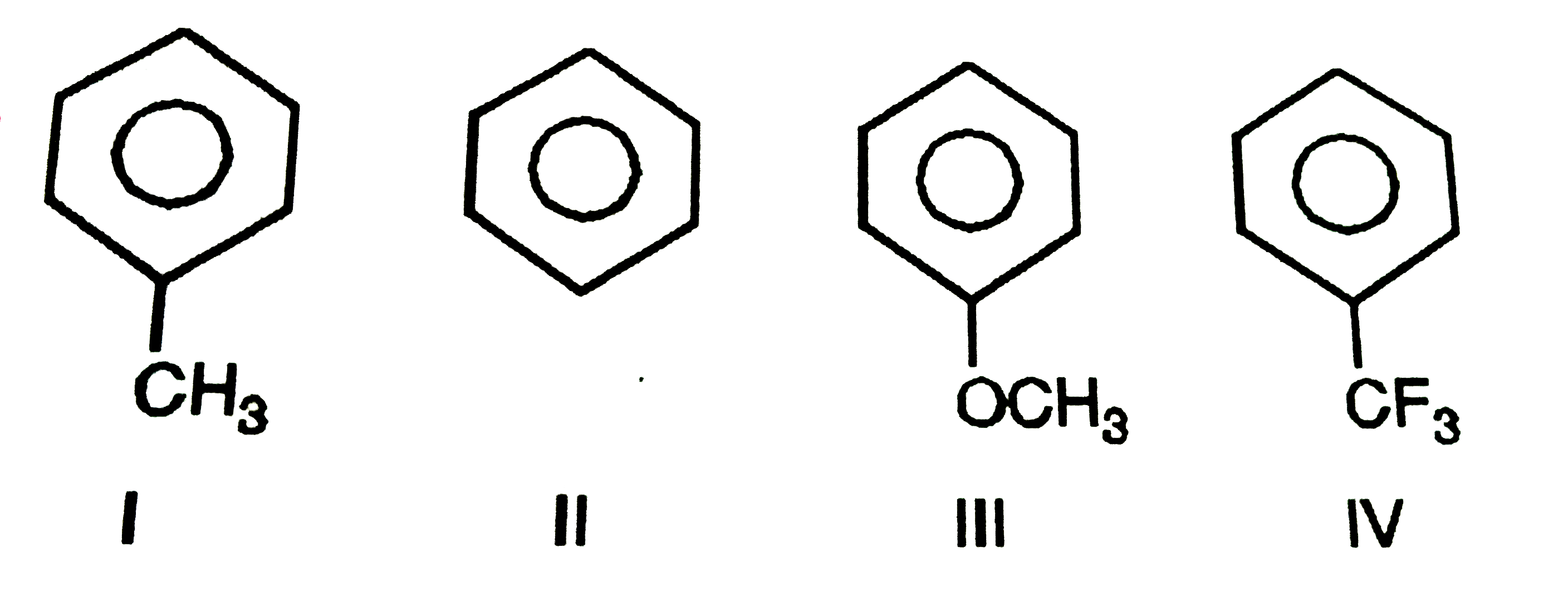
The correct arrangement for decreasing order of electrophilic substitution reactions .
View SolutionThe correct order of reactivity towards the electrophilic substitiution of the compounds aniline(I),benzene(II) and nitro-benzene(III) is
View SolutionWrite the major product of the following reaction `C_(6)H_(5)CH_(2)CH_(3)underset(NaCN)overset(Br_(2)//Delta)to`
View SolutionOxidizing agent required for these conversion are,
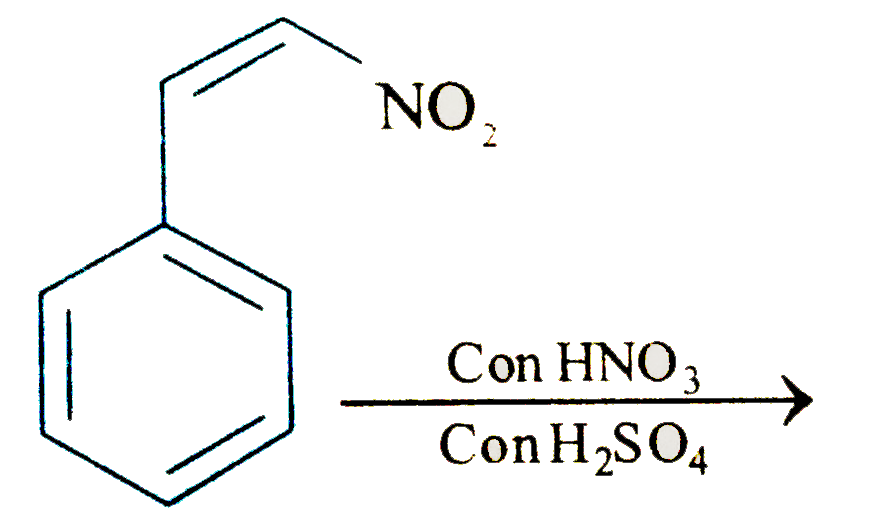
View SolutionWhich of the following is major product for the mono nitration of phenyl benzoate,

View Solution
The correct of rate of reaction of the following compounds with `E^(+)` will be
View Solution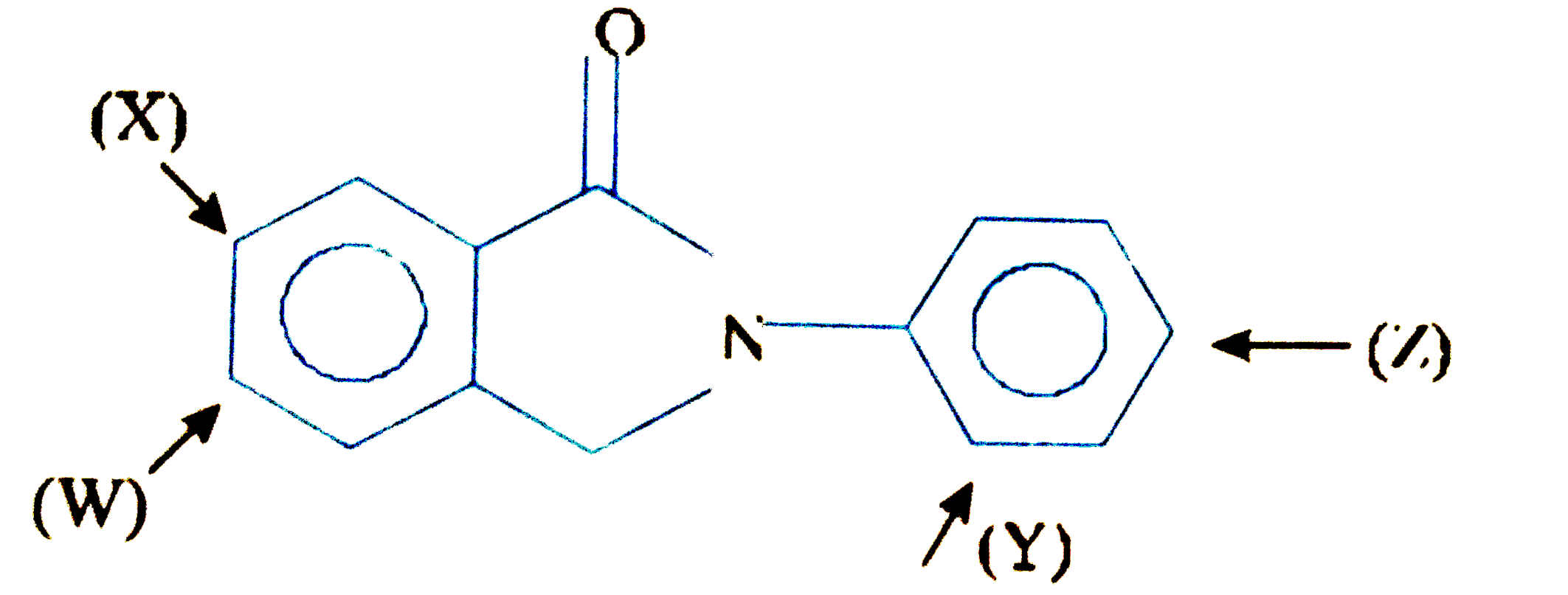
Which position gives major product when `E^(+)` attack the following compound
View Solution
The mechanism of an electrophilic substitution reaction is
Which of the following is not ture.
View SolutionWhich of the following hydrogens is most easily abstracted on reaction with bromine free radicals, `Br^(.)` ?
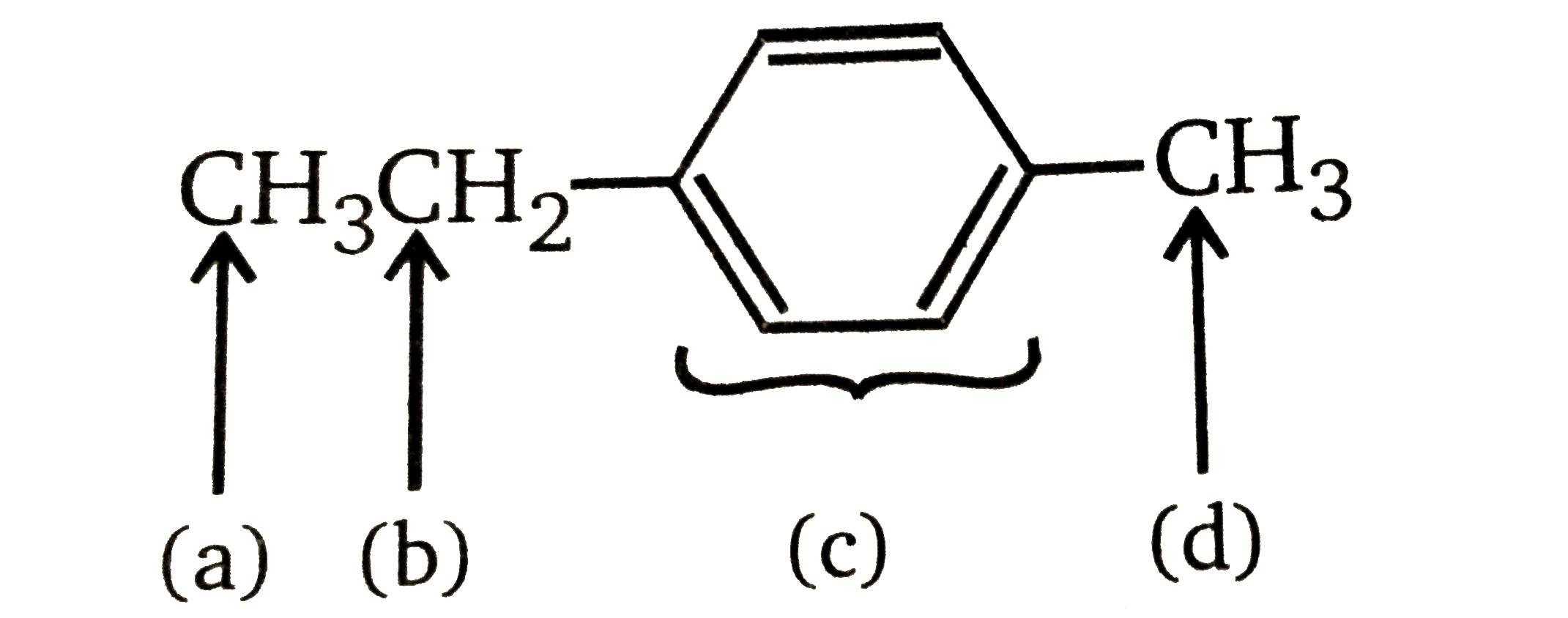
View SolutionWrite the product of the following reaction

View SolutionProduct of the reaction is
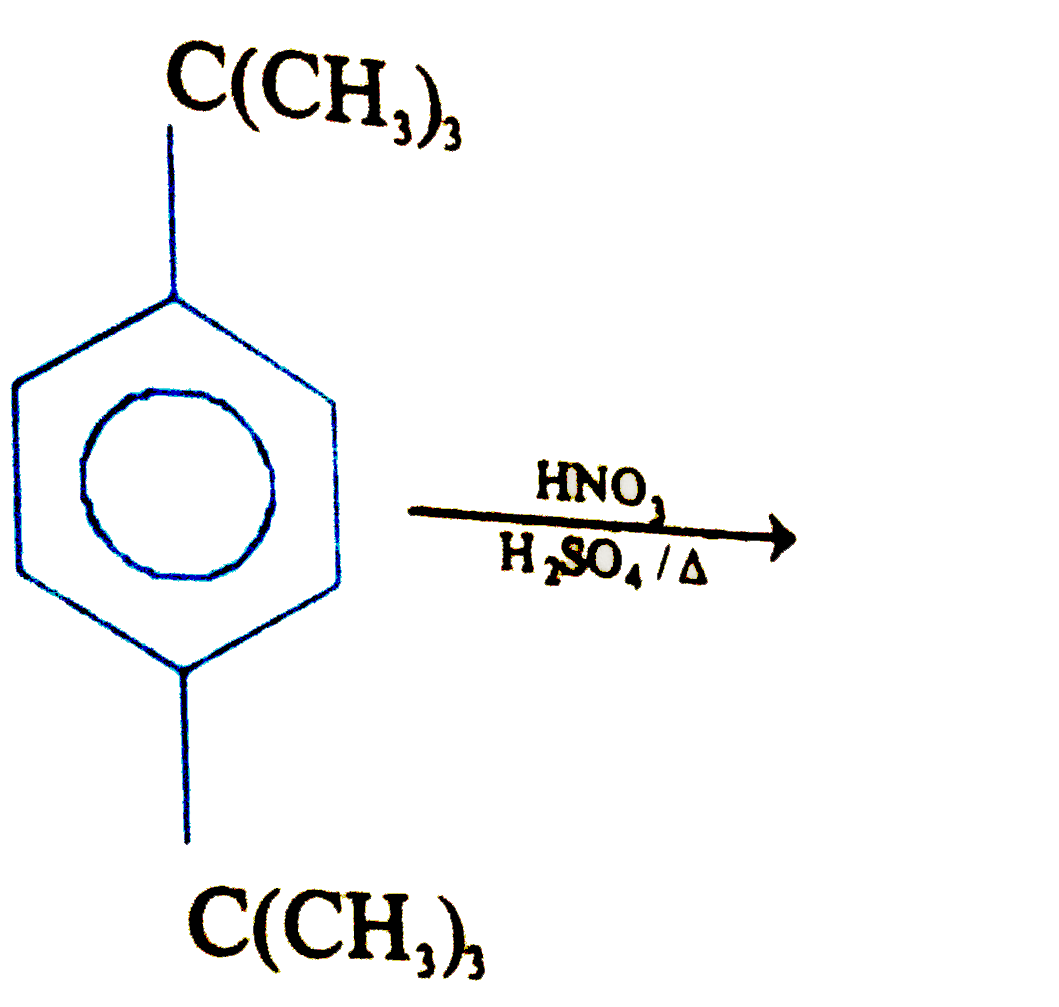
View SolutionOzonolysis of mesitylene gives
View SolutionSelect the compound/ions which is/are anti-aromatic
View SolutionWhich of the following compound is expected to undergo fastest electrophilic aromatic substitution than unsubstituted benzene
View SolutionWhat is/are true regarding nitration and sulphonation of benzene?
View SolutionIn which of the following reactant and product are correctly matched.
View SolutionWhich of the followin compound(s) on treatment with HCl forms a stable salt which can be separated and analyzed using `AgNO_(3)`.
View SolutionWhich of the following applies corretly to toluene
View SolutionWhich of the following cases, reactant and product are correctly matched.
View SolutionIn which of the following pair of compounds the first one is more ractive than second in the same electrophilic aromatic substitution reaction.
View SolutionIn which of the following reation meta substitution product predominate
View SolutionWhich is/are true about nitration of chlorobenzene using conc. `NO_(3)//H_(2)SO_(4)`
View SolutionBenzene, when treated with `CH_(2)O` (methanal) in presence of HCl, undergoes chloromethylation to form benzyl chloride `(C_(6)H_(5)CH_(2)Cl)`. If the produc is further treated with `AlCl_(3)` then expected product(s) is/are
View SolutionIn which of the following, one of the product would be t-butyl benzene
View SolutionWhich of the following will fal to product the product shown
View SolutionWhich of the following is/are correct
View Solution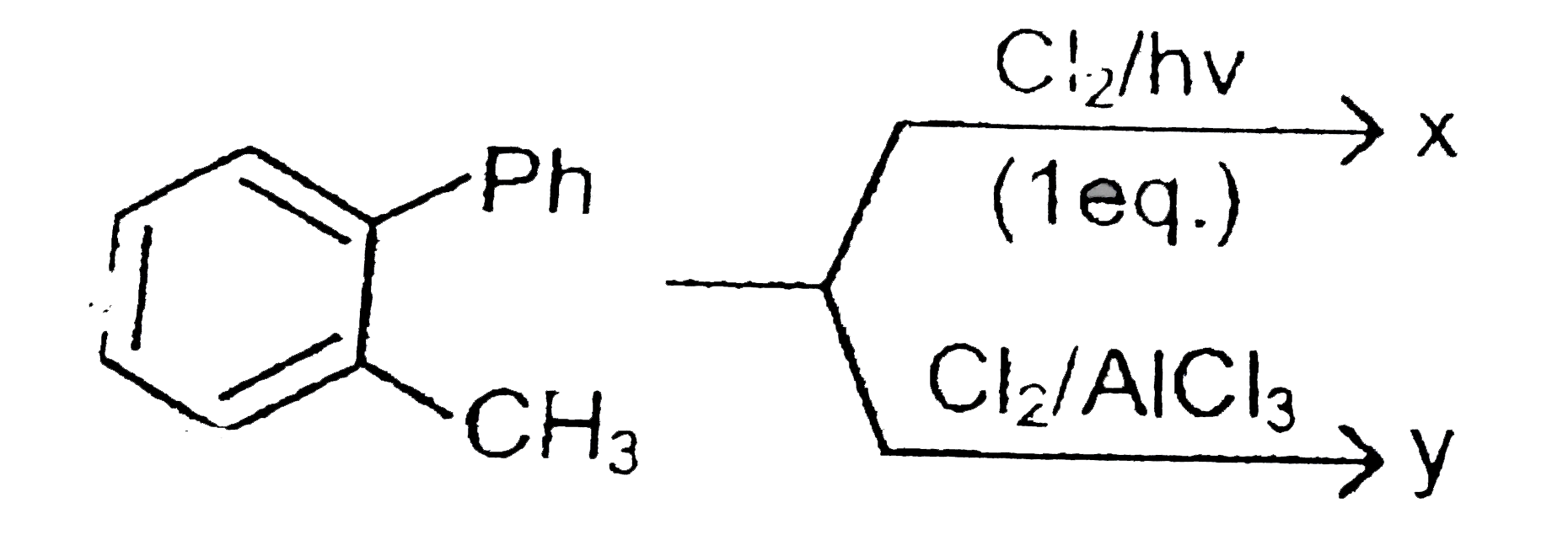
Consider the following reactions to answer the next three questions
Q. Major product X and Y are respectively
View SolutionConsider the following reaction to answer the next three equestions.

Q. If the product 'X' is treated with `AlCl_(3)` it undergoes an interamolecular friedel-craft reaction. The expected product P is
View Solution
A general mechanism for aromatic electrophilic substitution reaction is. (`K_(1)` and `K_(2)` are rate constant for the forward reaction) also C-D bond in harder to break than a C-H bond, and consequently reaction in which C-D bond broken proceed more slowly than the reaction in which C-H bond are broken. However experimetns reveal that nitration of `C_(6)H_(6) and C_(6)D_(6)` proceeds at equal rates while the same is not true for sulphonation of `C_(6)H_(6)` and `C_(6)D_(6)`.
Q. In the nitration reaction
View Solution
A general mechanism for aromatic electrophilic substitution reaction is. (`K_(1)` and `K_(2)` are rate constant for the forward reaction) also C-D bond in harder to break than a C-H bond, and consequently reaction in which C-D bond broken proceed more slowly than the reaction in which C-H bond are broken. However experimetns reveal that nitration of `C_(6)H_(6) and C_(6)D_(6)` proceeds at equal rates while the same is not true for sulphonation of `C_(6)H_(6)` and `C_(6)D_(6)`.
Q. What can be inferred regarding mechanism of sulphonation of `C_(6)H_(6) and C_(6)D_(6)`
View Solution
A general mechanism for aromatic electrophilic substitution reaction is. (`K_(1)` and `K_(2)` are rate constant for the forward reaction) also C-D bond in harder to break than a C-H bond, and consequently reaction in which C-D bond broken proceed more slowly than the reaction in which C-H bond are broken. However experimetns reveal that nitration of `C_(6)H_(6) and C_(6)D_(6)` proceeds at equal rates while the same is not true for sulphonation of `C_(6)H_(6)` and `C_(6)D_(6)`.
Q. When one of the carbons of benzene is labelled `(C^(14))`, in which case we expect greater yield of the product obtained at labelled carbon.
View SolutionFor any compound to be aromatic, compound should follow a given set of rule known as Huckel's rule
According to Huckel's rule of aromaticy :
(a) compound should be cyclic
(b) compounds shoulds be planar and conjugated .
(c) compound should have `(4n + 2 )pie^(-)`
where `n=0, 1, 2, 3.... integer number .
Which of the following is not an aromatic compound ?
View SolutionFor any compound to be aromatic, compound should follow a given set of rule known as Huckel's rule
According to Huckel's rule of aromaticy :
(a) compound should be cyclic
(b) compounds shoulds be planar and conjugated .
(c) compound should have `(4n + 2 )pie^(-)`
where `n=0, 1, 2, 3.... integer number .
Among the following which is a non-planer compound ?
View SolutionFor any compound to be aromatic, compound should follow a cartain rule known as Huckel's rule. According to Huckel's rule of aromaticity a). Compound should be cyclic
b). Compound should be planar and conjugated
c). Compound should have `(4n+2)pie^((-))`
where n=0,1,2,3, . . . . integer number.
Q. Identiy number of delocalised `pi`-electrons in pyridine
View SolutionFor any compound to be aromatic, compound should follow a cartain rule known as Huckel's rule. According to Huckel's rule of aromaticity a). Compound should be cyclic
b). Compound should be planar and conjugated
c). Compound should have `(4n+2)pie^((-))`
where n=0,1,2,3, . . . . integer number.
Q. Identify the compound while have maximum dipole moment.
View SolutionIf aromatic ring is substitued by more than groups then electrophilic aromatic substitution reaction take place according to more activating group. Type of group which donate electron in aromatic ring known as activating group
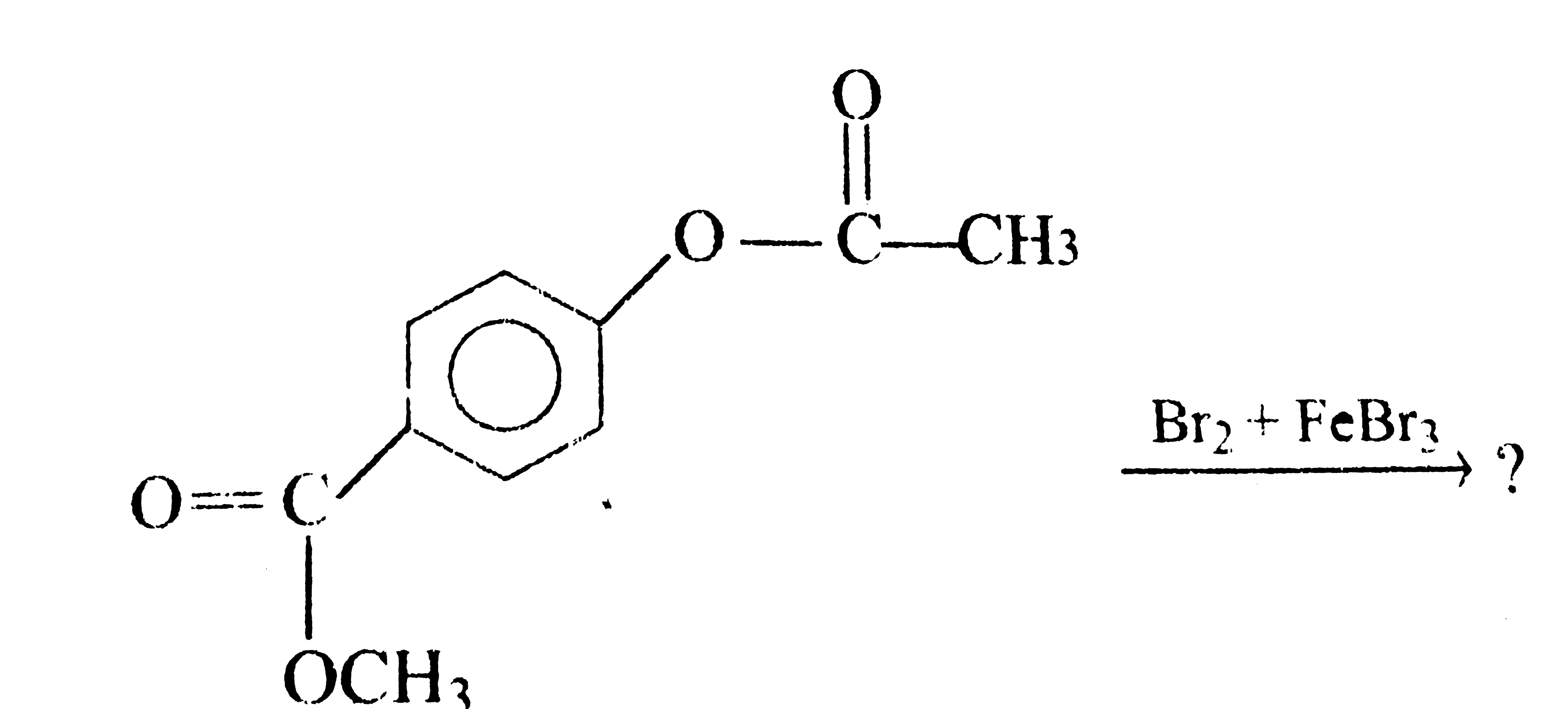
Find out correct product of reaction .
View SolutionIf aromatic ring is substituted by more than one group then electrophilic aromatic substitution reaction take place according to more activating group. The group which donates electrons to aromatic ring knwn as activating group and which withdraw electrons from the ring is called electron withdrawing group. generally all lectron releasing groups activates benzene ring towards electrophilic substitution and electron withdrawing groups deactivates ring towards electrophilic substitutions.
Q. Major product formation takes place at which position when the following is subjected for `E^(o+)` substitution

View SolutionIf aromatic ring is substituted by more than one group then electrophilic aromatic substitution reaction take place according to more activating group. The group which donates electrons to aromatic ring knwn as activating group and which withdraw electrons from the ring is called electron withdrawing group. generally all lectron releasing groups activates benzene ring towards electrophilic substitution and electron withdrawing groups deactivates ring towards electrophilic substitutions.
Q. Find out major product of following reaction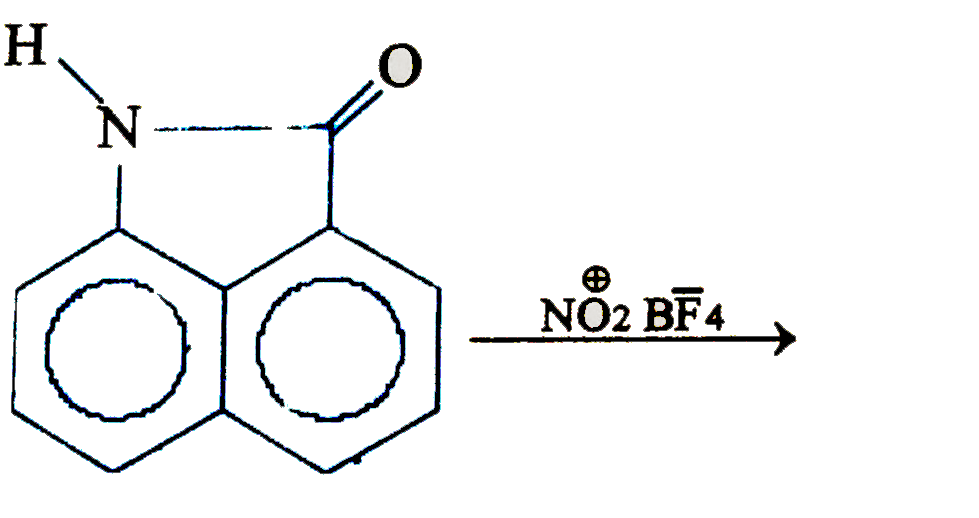
View SolutionColumn matching prolems each column may have more than one answer.
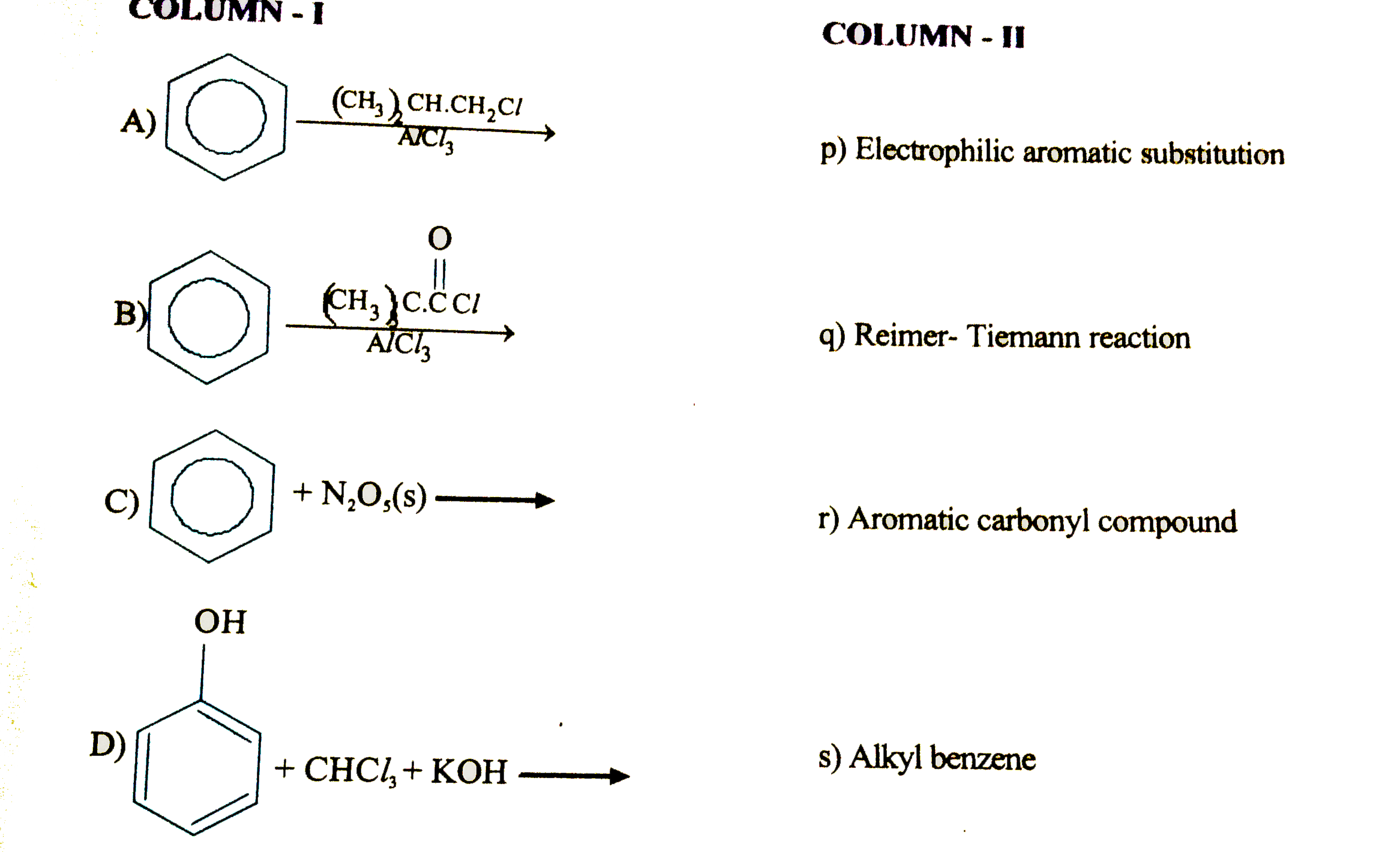
View SolutionMatch the following columns
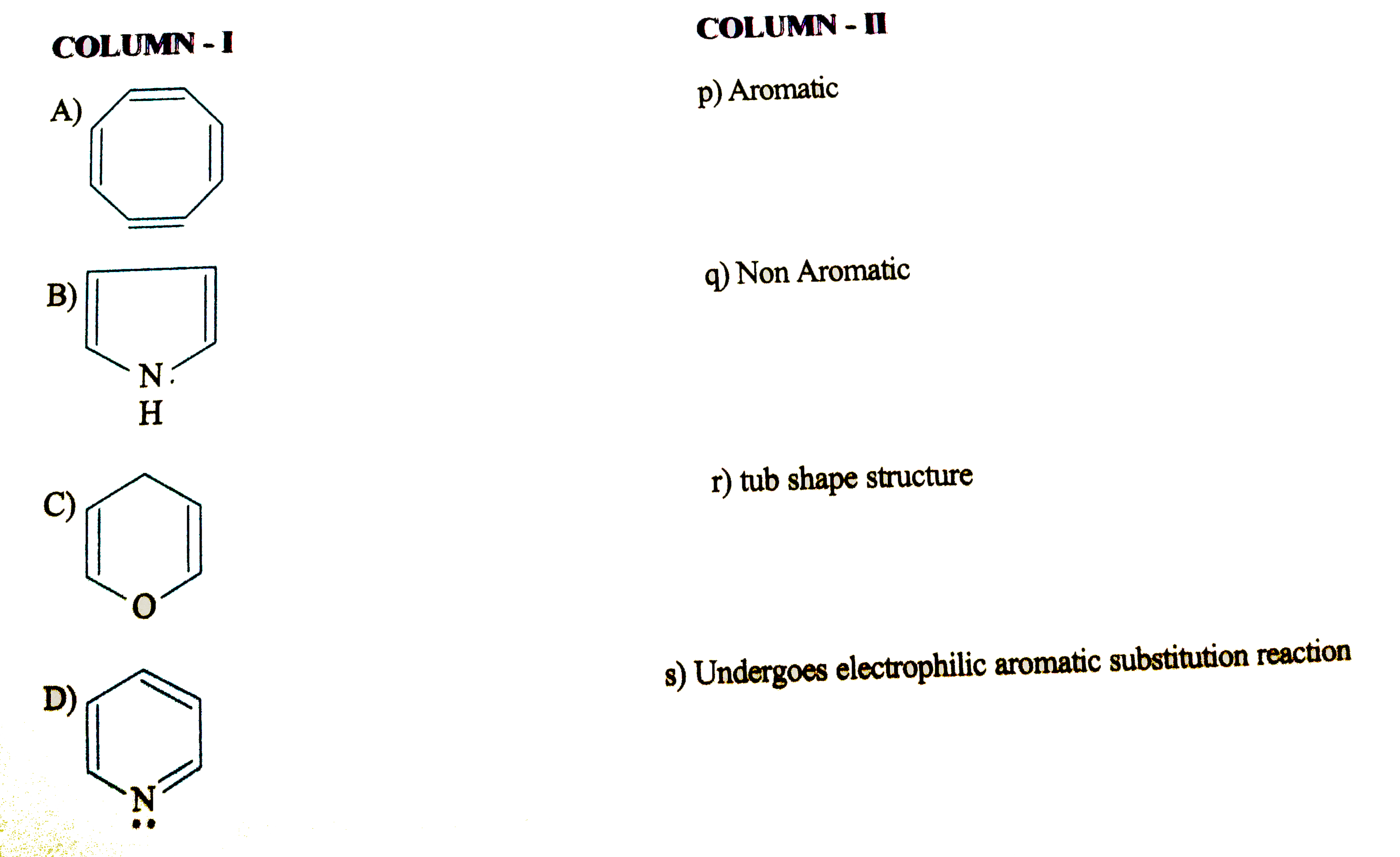
View Solution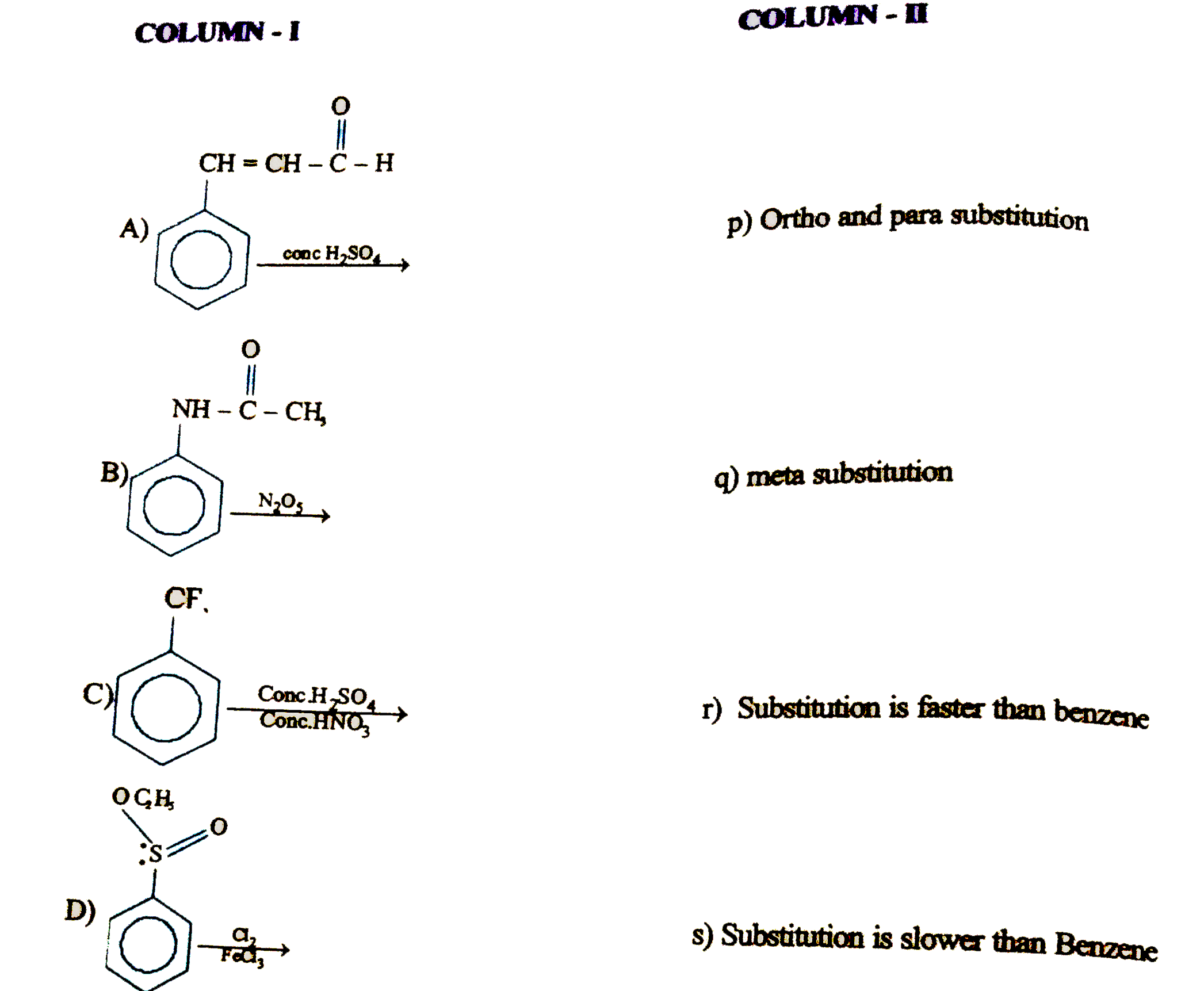
View Solution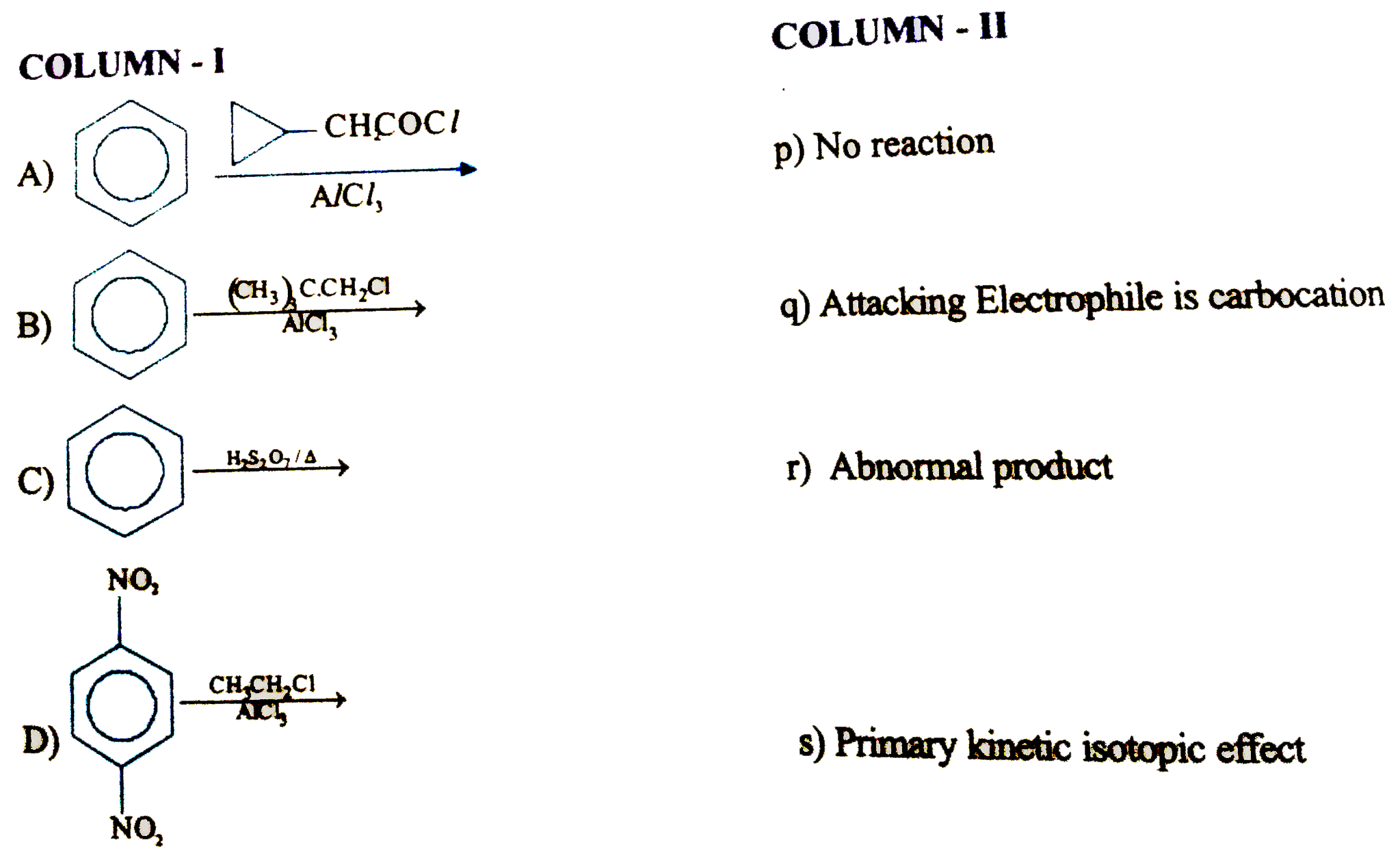
View Solution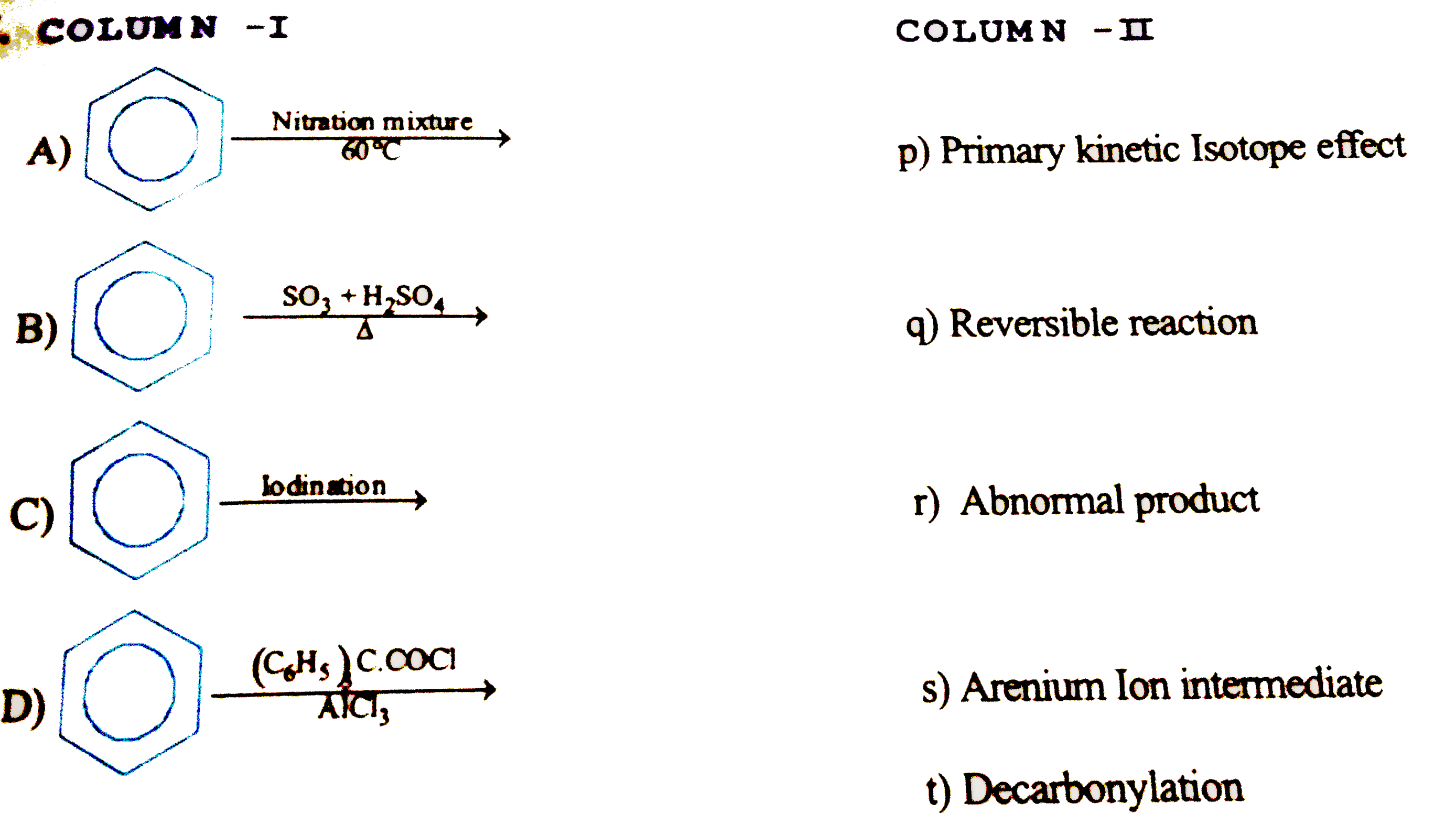
View SolutionIdentify numbr of substitutents those are deactivating but ortho and para directing.
`-underset(..)overset(..)(F :),-CH_(3),-overset(O)overset(||)(C)-NH_(2),-CH=CH-overset(O)overset(||)(C)-OH,-underset(..)overset(O)overset(||)(S)-C_(2)H_(5)`
`-underset(O)underset(||)overset(O)overset(||)(S)-C_(2)H_(5),-overset(..)(N)=O,-overset(O)overset(||)(C)-NH_(3),-CH=CH-overset(O)overset(||)(C)-H`
View SolutionEach of the compounds shows below has two aromatic ring. Labled as A and Identify number of compounds in which ring B is more active than ring A for electrophilic aromatic substitution reaction .
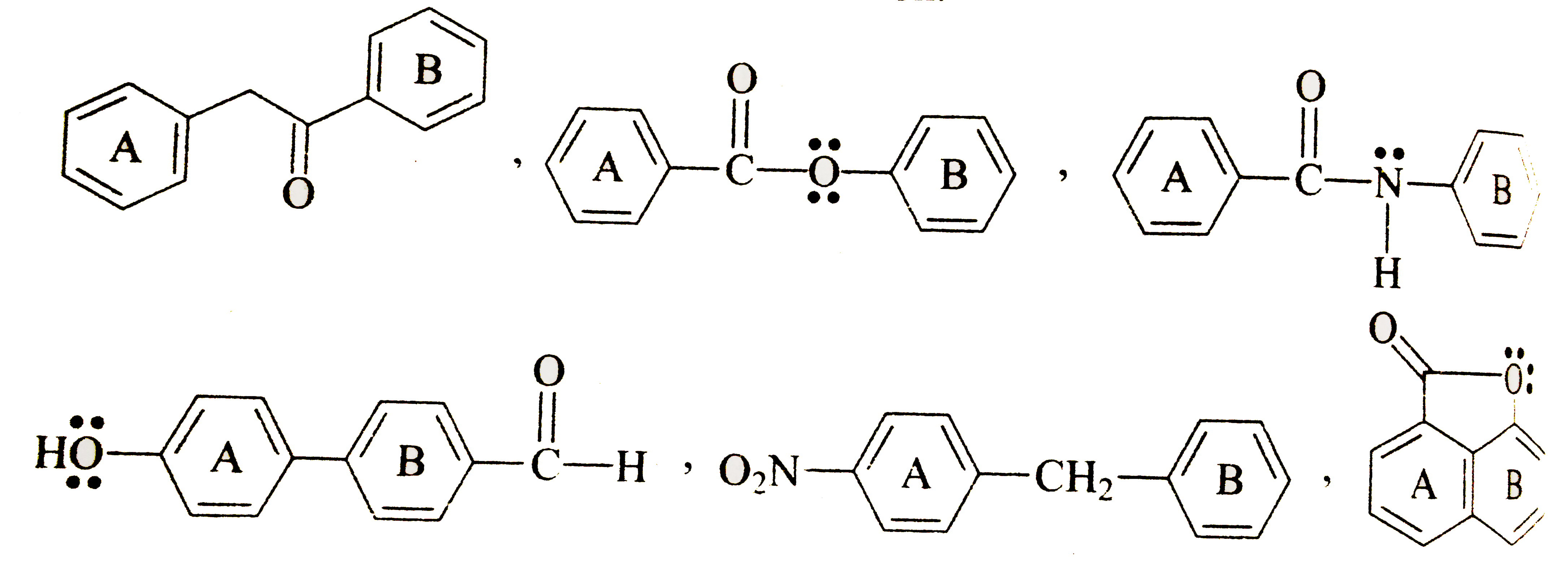

View SolutionExamine the structural formula shown below and find out how many compounds undergo electrophilic nitration more rapidly than flouro benzene.
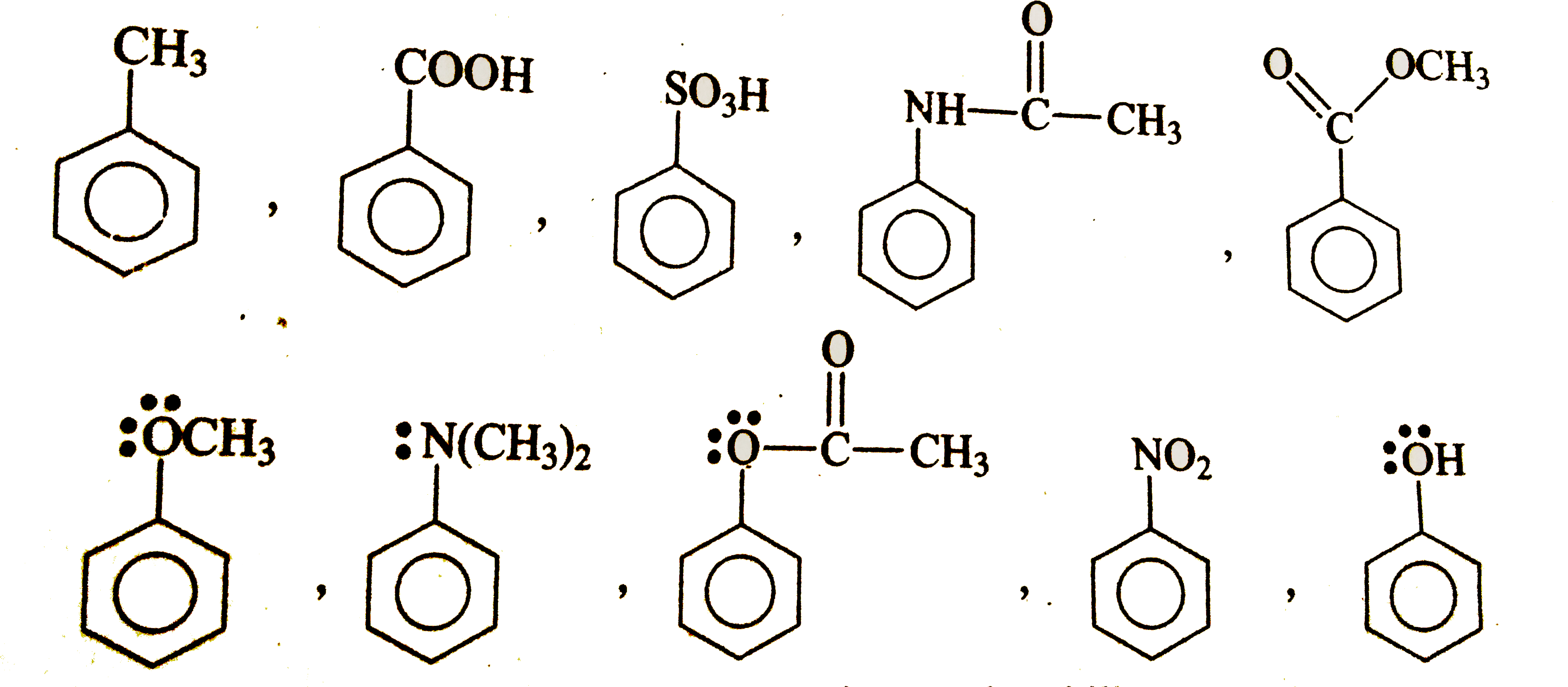
View SolutionHow many of the following are aromatic in nature.

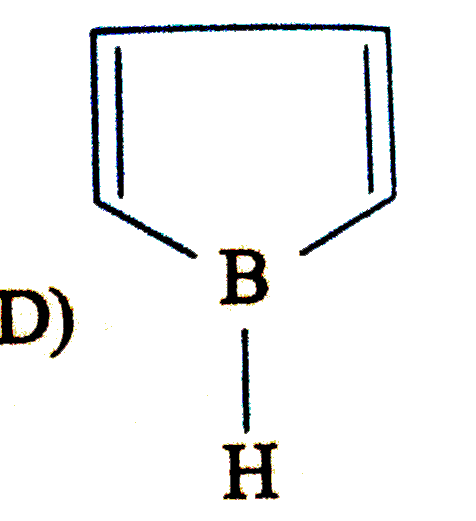
View SolutionIdentify number of reactions that can give benzene as major product.
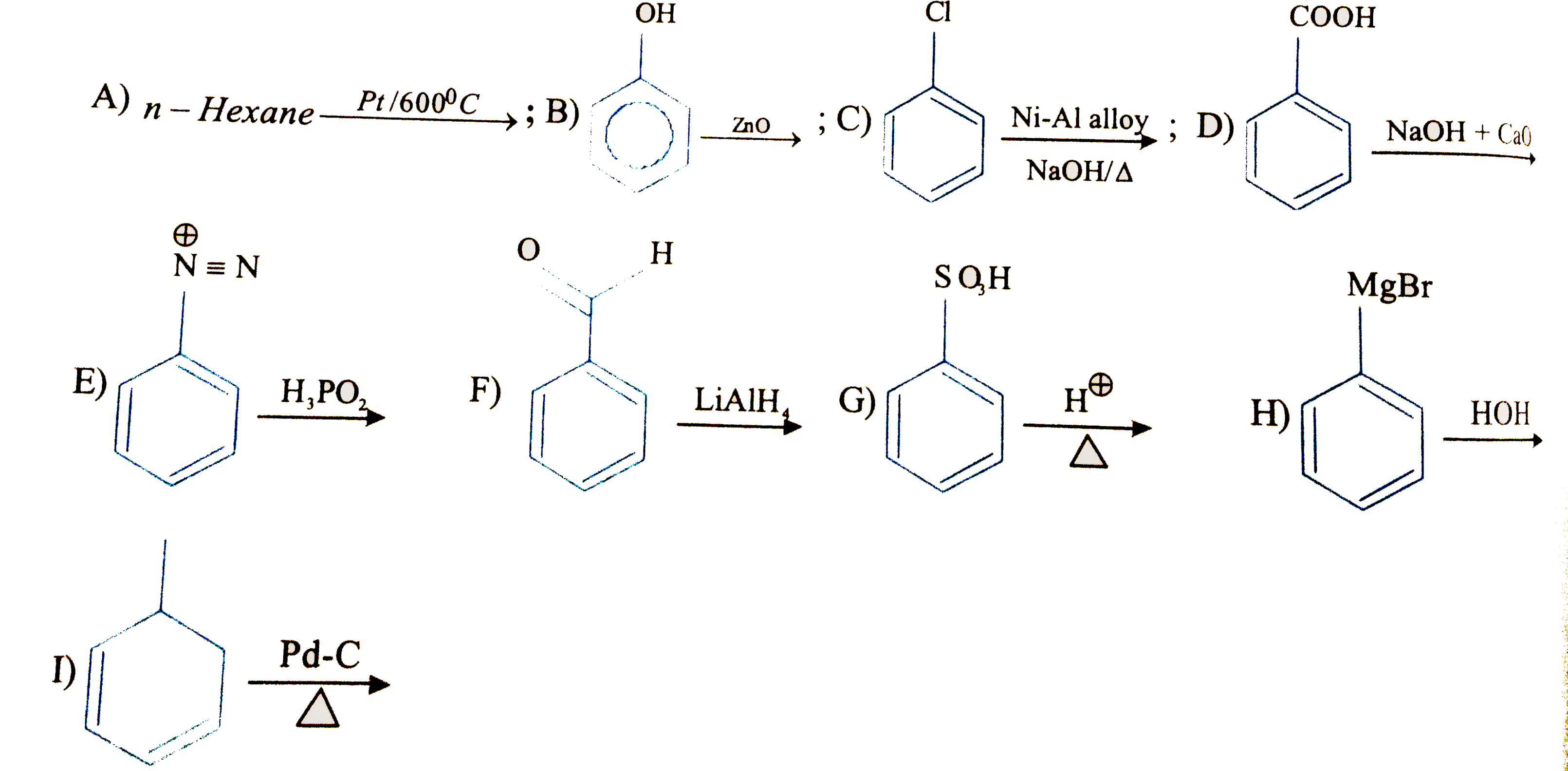
View SolutionExamine the structural formula shown below and find out how many compounds can not give Friedel Carfts reaction .

View SolutionEaxmine the structural formula shown below and find out how many compounds will show oxidation reaction with acidic `KMnO_(4)`

View Solution
Level-5 questions and complete solutions for chapter BENZENE of NARAYANA CHEMISTRY (HINGLISH) of Class 11